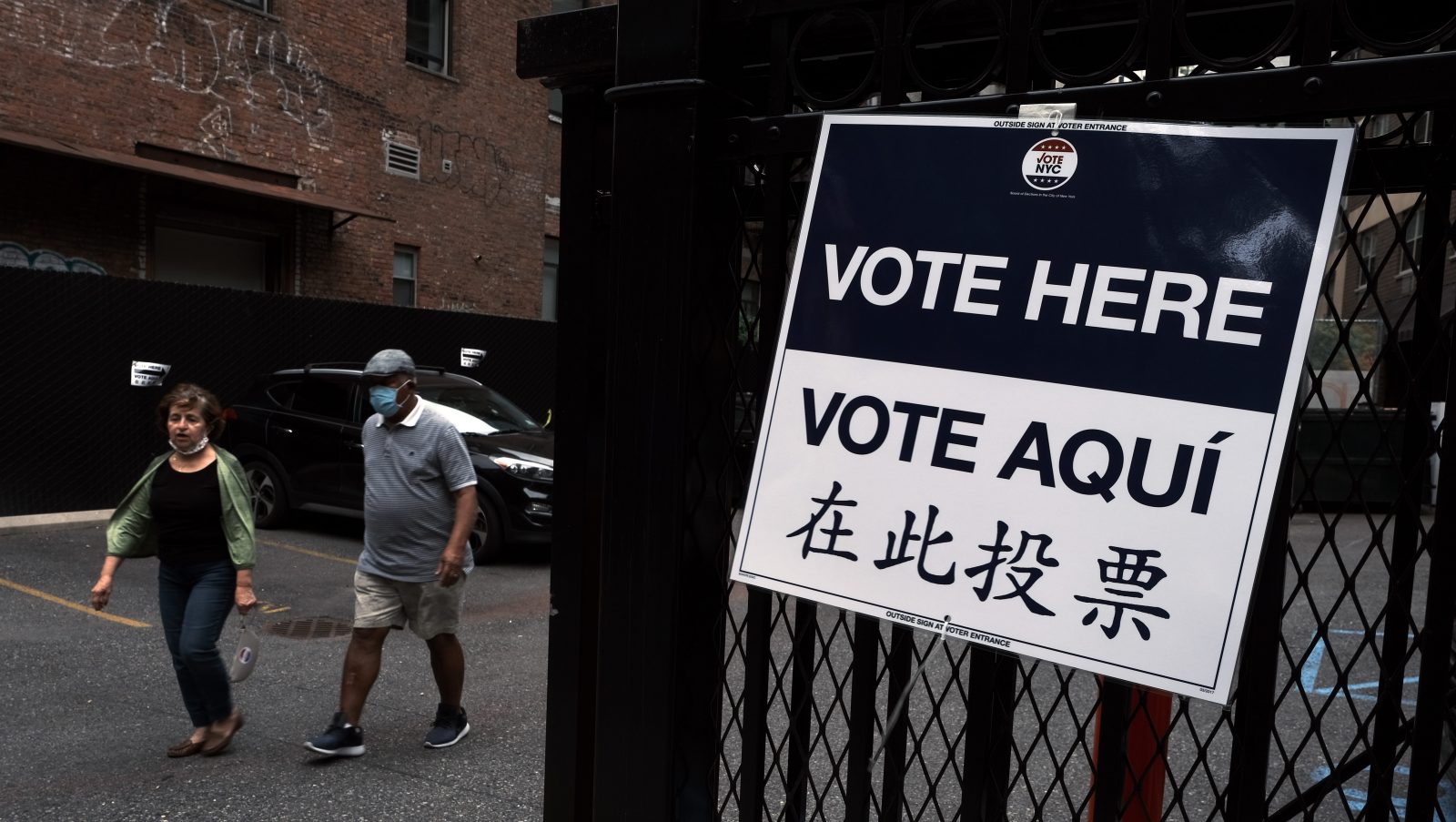On Tuesday, New York City Democratic primary voters headed to the polls to cast their votes for the candidate who will likely become the next mayor of the country’s most populous city. Thirteen Democrats, including a former presidential hopeful, a city comptroller, and a rapper, ran to replace New York Mayor Bill de Blasio.
Right now, Eric Adams, a former New York Police Department captain and Brooklyn’s borough president, has a big edge over civil rights lawyer Maya Wiley and former sanitation department commissioner Kathryn Garcia, who are neck and neck for second place, as the city waits on absentee ballots to come in. No candidate is on track to clinch 50 percent of the vote, though, which means New York City’s new ranked-choice voting system has been triggered. Low-performing contenders will get systematically eliminated, and their ballots will be reallocated to their voters’ next-ranked choice. Eventually, one candidate will emerge victorious.
Whoever wins the Democratic primary will have cleared the biggest hurdle on the path to Gracie Mansion. But once one of these candidates is in office next January, he or she will have to navigate a series of even more daunting obstacles. How to reduce the city’s contribution to climate change is one of them. The city could see more frequent heat waves, an uptick in infectious diseases, and 6 feet of sea-level rise by the end of the century due to climate change, so the mayor has a strong incentive to cut emissions. They also have a legal mandate to do so: In 2019, de Blasio signed a law that committed the city to reducing its greenhouse gas emissions 40 percent before the end of this decade. By midcentury, the city aims to have slashed its emissions 80 percent.
Each of the three frontrunners has a plan to address the city’s emissions. But they have different visions for how to do it.
Garcia, who launched the city’s first electronics recycling program and worked to ban styrofoam when she worked at the Department of Environmental Protection under former Mayor Michael Bloomberg, says she wants to “move New York City to a fully renewable energy economy starting on day one.” To her, that means requiring school buses to be fully electric and creating 250 miles of protected bike lanes in the city. She wants to convert Rikers Island, a 418-acre island in the East River that is home to a notoriously brutal jail slated to close in 2026, into a “renewable energy zone” replete with solar panels, battery storage facilities, and composting sites. She also advocates for putting gardens on school roofs and making the city’s 520 miles of coastline more resilient to flooding and sea-level rise, among other things.
Wiley’s climate platform is also comprehensive. She suggests retrofitting New York’s affordable housing buildings to become more energy efficient and replacing boilers and furnaces that run on natural gas with greener sources like geothermal energy. She aims to divest city pensions from fossil fuels before 2023 and create a city-wide “Asthma Action Plan” to address high asthma rates. She wants to go a step further than other cities and become “carbon negative” rather than carbon neutral — remove more CO2 from the atmosphere than is emitted (though the technology to accomplish this is still relatively nascent).
Adams’ plan is considerably less fleshed out. “New Yorkers are primed to be global leaders at this critical moment, shrinking our carbon footprint and living more sustainably,” it reads. In order to have New Yorkers live more sustainably, Adams wants to transition the electric grid off of natural gas and onto renewable sources of energy, create training programs in green jobs, expand incentives for community solar installations, and turn the city into “the wind power hub of the Eastern Seaboard.” The plan is, overall, heavy on recycling and composting initiatives and light on specifics of how the city might become a wind energy hub and when it might phase out fossil-fuel powered power plants. His platform does include an unusual proposal to commission green art that turns “pollutants and harmful compounds into harmless nitrates and carbonates.”
These initiatives are grand ideas, not detailed policy roadmaps. Whoever becomes New York City’s next mayor will have to wrangle with New York’s governor, the City Council, recalcitrant community boards, powerful business interests, and activists, all of which will have different opinions on turning the city into a wind hub or transforming Rikers into a giant solar field. Some — perhaps most — of these plans might never see the light of day. New Yorkers will know which candidate’s platform is on a collision course with reality sometime in mid-July.



